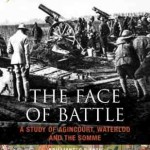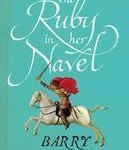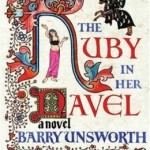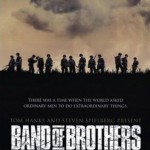One of the toughest challenges involved in writing about medieval warfare is that of describing what battle in that period was like: how it might have felt to be there, including not just the physical sensations but also the psychological and emotional. What would have been running through the combatants’ minds? What motivated and inspired
One of the toughest challenges involved in writing about medieval warfare is that of describing what battle in that period was like: how it might have felt to be there, including not just the physical sensations but also the psychological and emotional. What would have been running through the combatants’ minds? What motivated and inspired men like my protagonist, Tancred, to take up arms in the first place, and what gave them the confidence to risk their lives in the fray? Was it for money or fame that they principally fought, in the name of God or one’s king, or (more probably) was it a combination of all of these things?
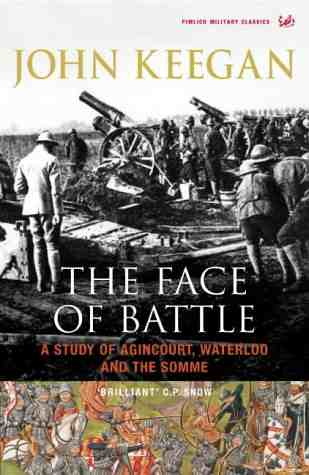 The historian John Keegan, who sadly passed away last year, explores similar themes in his pioneering book The Face of Battle, in which he analyses and compares the experience of combat in three major encounters of the last 600 years: Agincourt (1415), Waterloo (1815) and the Somme (1916). In particular he examines how the mechanics and logistics of conflict affected the psychology of the individual soldier – looking not just at the critical moments during the heat of combat, but also at the hours before battle was joined, and its aftermath once the dust has settled.
The historian John Keegan, who sadly passed away last year, explores similar themes in his pioneering book The Face of Battle, in which he analyses and compares the experience of combat in three major encounters of the last 600 years: Agincourt (1415), Waterloo (1815) and the Somme (1916). In particular he examines how the mechanics and logistics of conflict affected the psychology of the individual soldier – looking not just at the critical moments during the heat of combat, but also at the hours before battle was joined, and its aftermath once the dust has settled.
Keegan eschews analyses of strategy and tactics that many conventional military histories often involve, which – he argues – can sometimes misrepresent the ebb and flow of battle; instead he recognises the chaos and unpredictability inherent in war. The focus of his study is statedly not upon the respective generals and their abilities to lead and choose the correct course of action, but upon the lower ranks: a bottom-up rather than a top-down angle.
An advantage, too, of taking such a long view of the experience of battle is that he is able to highlight those aspects that have remained constant even over hundreds of years, in widely different fighting environments; and those which have altered as a result either of technological development – in weaponry, transport and communication, among other areas – or of societal changes.
A good example of the latter is the religiosity of the common soldier, which had declined during the age of the Enlightenment prior to Waterloo, only to re-establish itself in the Victorian age. The motivations of the men fighting in 1815 were thus vastly different to those of their counterparts only a century later. Prayer and faith in God helped many British soldiers combat their fears and reconcile themselves with the possibility of death in 1916, in a way and to an extent that their predecessors at Waterloo would not have been able to identify with, but which those at Agincourt very probably would.
One particularly ingenious feature of the book, which I can’t fail to mention, lies in the maps. Keegan juxtaposes the fields of battle firstly of Agincourt and Waterloo, and then of Waterloo and the Somme, depicting them on the same scale to demonstrate how the magnitude of battle has increased exponentially over the centuries.
Due to the outpouring of fiction in the military-historical sub-genre in the last couple of decades, accounts of past conflict illustrating the hardships and traumas faced by the front-line soldier are much more familiar than they once were. At the same time there has been a massive surge of interest in recent decades into the kind of bottom-up history favoured by Keegan: an interest that began in academia but which has filtered down into popular history as well, so that there has been an explosion in studies of this nature.
For both of those reasons The Face of Battle doesn’t seem quite quite as revolutionary a text as it probably did when it was first published in 1976. Nevertheless, it remains a thoroughly absorbing and eye-opening read, and one that I can highly recommend.
As 2012 draws to a close and the New Year beckons, I thought it was time that I unveiled some more of my top reads from the the past twelve months. So, following on from Barry Unsworth’s The Ruby in Her Navel and Jared Diamond’s Collapse in Part One earlier this month, here’s another of my favourite books of the year.
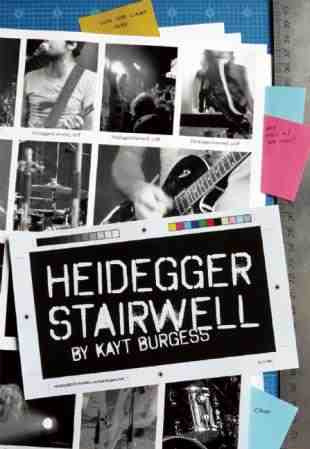 Heidegger Stairwell
Heidegger Stairwell
Kayt Burgess
Arsenal Pulp Press, 160 pp., September 2012
$14.95 (Canada, USA) / £9.34 (UK)
Paperback
The winner of the 34th annual international 3-Day Novel Contest, Heidegger Stairwell is a remarkable achievement by Canadian author Kayt Burgess, and is, for me, the standout novel of 2012.
Music journalist Evan (neé Evie) Strocker is compiling a memoir chronicling his time growing up with the members of the world-famous indie-rock band Heidegger Stairwell, their rise to global stardom, and how, in his eyes, at least, their success is entirely due to his efforts behind the scenes. Although not a part of the band himself – he plays no instrument and his role is more of a groupie – without him, he argues, they would never have got to where they are.
At the heart of the novel is a coming-of-age story, as Evan – a transgender man coming to terms with his sexuality – tries to figure out his identity, to make sense of the world and, by writing this memoir, to impose a sort of order on it. But, as we soon learn, his account of events is not wholly reliable, and many of his claims are disputed by the other members of the band, whose voices (not to mention their many, often petty squabbles) are heard in the editorial notes that annotate the text at various points. The dysfunctional relationships within the band are brilliantly and believably drawn, and feel true to the rockstar type, and yet each of the characters is distinctive enough to prevent them from seeming mere clichés.
A complex and highly original novel, feverishly paced and told in captivating prose, I found Heidegger Stairwell very hard to put down, and was sorry to finish it, so compelling are Burgess’s characters, and so well-observed is the world that she conjures up. It’s a tremendous accomplishment – all the more so for having been composed in such a short space of time – and I eagerly await her next title.
It’s that time of year again! Following on from 2011’s top historical reads, I’ve selected a few of the books that I’ve most enjoyed in 2012: new releases as well as old favourites, some of them historical and some of them not. Here are a couple to get
It’s that time of year again! Following on from 2011’s top historical reads, I’ve selected a few of the books that I’ve most enjoyed in 2012: new releases as well as old favourites, some of them historical and some of them not. Here are a couple to get you started. I’ll be posting some more of my recommendations before the end of the year, so watch this space for Part Two coming soon!
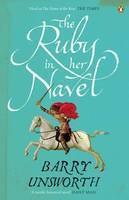 The Ruby in Her Navel
The Ruby in Her Navel
Barry Unsworth
Penguin, 336 pp., £7.99
Paperback
Set in the twelfth-century in the young Kingdom of Sicily, this novel by the late Barry Unsworth, who died earlier this year, is the tale of a Norman would-be knight named Thurstan Beauchamp. A purveyor of entertainments, envoy and occasional spy attached to the palace administration of King Roger II, he is ambitious but naive, and it is because of those very qualities that he soon finds himself caught up in a web of deceit, treachery and conspiracy.
Brilliantly evocative and skilfully written, The Ruby in Her Navel captures a sense of the religious, political and cultural tensions undermining the nascent kingdom. Unsworth’s facility with description is second to none, and the sights and sounds and smells of Thurstan’s world are brought to life in vivid fashion. For those with an interest in medieval fiction, there are few novels I can recommend more highly.
I first read this book in 2007, as I was just embarking on the novel that would later become Sworn Sword. It was a real inspiration for me at the time, and, even when I came to read it for a second time earlier this year, it didn’t disappoint. For a fuller review, click here.
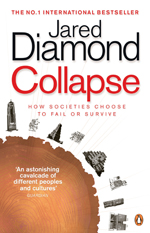 Collapse
Collapse
Jared Diamond
Penguin, 590pp., £9.99
Paperback
My top non-fiction read of the year, Collapse seeks to explain how and why mighty civilisations have fallen in the past, and what lessons we might learn from their failures.
Drawing on examples from both recent and ancient history, Diamond, who is Professor of Geography at UCLA, explores the various forces – cultural, political and environmental – that led to the demise of societies in the past. His researches take him all across the globe, from the lost civilisations of Easter Island and Norse Greenland to modern China, Australia and Haiti, all of which are facing many of the same struggles.
It’s a fascinating and in-depth study which offers plenty of food for thought about our modern lifestyles, and how Western civilisation needs to adapt if it is to survive the pressures of resource depletion, pollution and climate change. A must-read.
During the course of 2006-7, when I was first laying pen to paper on the early drafts of the manuscript that would become Sworn Sword, I was fortunate enough to read a number of historical novels that really inspired me. In recent weeks I’ve been revisiting a few of those novels, to see if they
During the course of 2006-7, when I was first laying pen to paper on the early drafts of the manuscript that would become Sworn Sword, I was fortunate enough to read a number of historical novels that really inspired me. In recent weeks I’ve been revisiting a few of those novels, to see if they still hold the same fascination for me five or so years on, and whether with the benefit of more writerly experience I view them any differently now.
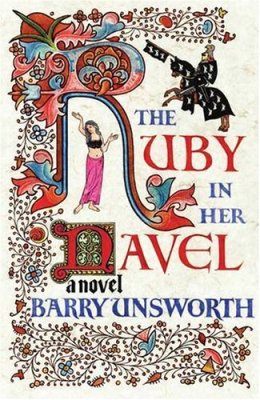 Among those books were titles by Bernard Cornwell, C. J. Sansom, and Robert Harris, set in periods ranging from Rome in the late Republic to Tudor England. Particular inspiration, however, came from The Ruby in Her Navel by celebrated British author Barry Unsworth.
Among those books were titles by Bernard Cornwell, C. J. Sansom, and Robert Harris, set in periods ranging from Rome in the late Republic to Tudor England. Particular inspiration, however, came from The Ruby in Her Navel by celebrated British author Barry Unsworth.
Longlisted for the Booker Prize in 2006, it’s set in mid-12th century Sicily in the reign of King Roger II, more than seventy years after the Norman conquest of the island, in a brief and peculiar (for the Middle Ages) period of toleration that saw various ethnic and religious groups – Normans, Italians, Saracens and Byzantine Greeks; Muslims, Jews and both Western (Latin) and Orthodox Christians – co-existing in apparent harmony despite the political fallout from the recent failure of the Second Crusade. More specifically, it’s the story, told in the first person, of a young would-be knight named Thurstan Beauchamp, who works as a purveyor of entertainments and occasional envoy and spy – for want of better terms – attached to the Diwan (Office) of Control in the palace administration.
What unfolds is a tapestry of competing nobles, royal officials, churchmen, all with their own ambitions and plans for advancement: a shadowy assortment of real and imagined foes with the means to destabilise King Roger’s realm from within and without. Through those tangled webs the trusty, proud and not a little naive Thurstan makes his way, but soon he finds himself embroiled in a plot that threatens to destroy all he holds dear. There are the added complications, too, of the two women in his life: Thurstan’s childhood sweetheart Lady Alicia, recently widowed and returned from Outremer; and the exotic and enchanting Anatolian belly-dancer Nesrin, whose troupe he employs to entertain at the king’s court.
This a carefully crafted portrait of an unusual place and time in history. Unsworth’s descriptive powers and his ability to evoke all the senses are second to none. His wide-ranging settings – from the richness of the palace at Palermo or the elaborate gardens at Favara to the dusty streets of the port of Bari in Apulia – are desribed in vivid detail. The Ruby in Her Navel showed me the power of historical fiction to evoke the spirit of a distant age and to bring the past to life, and even on a second reading it did not disappoint.
Thurstan’s world is a complex and uncertain one in all sorts of ways: politically, religiously and morally. By choosing to tell the story in the first person from his perspective, Unsworth allows us to glimpse something of the various dark forces that are at work without ever fully comprehending them, as well as to engage on an intimate level with the realities of life in that age and the burning issues of the day. It’s skilfully done, and while Thurstan is undoubtedly a flawed hero – vain, overly confident in his own abilities, and too trusting by half – he nevertheless manages to be a character with whom it is possible to sympathise.
For those with an interest in medieval fiction, there are few novels I can recommend more highly. The Ruby in Her Navel remains one of my all-time favourites.
NOTE: In an unexpected and very sad turn of events, the day after I posted this review (8 June) the news broke that Barry Unsworth had died at the age of 81 in Perugia, Italy. Even though it wasn’t my intention, I hope that my above words will stand as a tribute, however small, to his life and to his qualities and skill as a writer. He will be sorely missed by his many fans.
We few, we happy few, we band of brothers;
For he to-day that sheds his blood with me
Shall be my brother …
– William Shakespeare, Henry V, Act IV Scene iii
The idea of the “band of brothers” is central to Sworn Sword. The opening encounter at Durham sees Tancred’s conroi (the
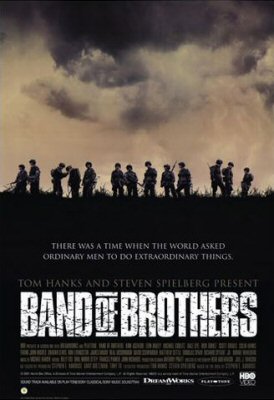
Promotional poster for the Second World War miniseries Band of Brothers, which was originally broadcast in 2001.
We few, we happy few, we band of brothers;
For he to-day that sheds his blood with me
Shall be my brother …
– William Shakespeare, Henry V, Act IV Scene iii
The idea of the “band of brothers” is central to Sworn Sword. The opening encounter at Durham sees Tancred’s conroi (the basic Norman cavalry unit, usually composed of around twenty men) shattered and his lord killed at the hands of Northumbrian rebels. Only two of his fellow knights, his close friends Eudo and Wace, survive to help him carry the stain of that defeat. The close group of warriors he once belonged to, who ate and trained and joked and fought together, is no more.
What happened to the real survivors of Durham is not recorded in the primary sources that mention the battle; indeed it is rare that the chronicles offer much by way of insight into the feelings of the people whose fates they record. Still, it is possible to imagine the grief and guilt and sense of loss those survivors had to bear, and the thoughts of revenge they must have harboured.
To capture a full sense of what it means to be part of such a tight-knit combat unit, I sometimes look to similar depictions elsewhere in fiction. One of the best portrayals I’ve come across is in the TV miniseries Band of Brothers. I first saw this series when it was originally shown in 2001, and watched it a second time a few years back when I was in the early stages of writing the novel that would become Sworn Sword.
With the second book, The Splintered Kingdom, now completed and my thoughts already turning to the next instalment of Tancred’s story, I went back to view the series on DVD again this week. Each time I’ve come to it with new eyes, and each time I’ve been able to take something away from it that either adds to my understanding of the hardships of war, or gives me ideas for fresh avenues to explore or new ways to depict the ongoing conflict that was the Norman Conquest in my writing.
The “band of brothers” of the series’ title is Easy Company of 2nd Battalion, 506th Parachute Infantry Regiment in the 101st Airborne Division of the U.S. Army. Over ten episodes we follow the exploits of the various characters – all based on real-life individuals – who make up the company, from their early training to Operation Overlord, and from there through Operation Market Garden and the Battle of the Bulge to the occupation of Germany at the end of the war.
The over-arching narrative of the 1944-5 campaign in Western Europe bears some similarities to that of the Norman Conquest. The series of operations which led from the Normandy landings to Berlin was long and arduous; progress was sporadic and frequently subject to German counter-offensives. Just as D-Day was only the beginning in June 1944, so the Battle of Hastings proved merely the opening engagement, albeit a highly significant one, in the Conquest.
Even though nearly 900 years separate the Second World War from my own period, there’s still a lot that can be learnt from Band of Brothers, not least regarding the experience of war and the psychology of those individuals who make it their business to fight. It’s fascinating to follow the journeys of the various characters and see how they each respond to the situations they find themselves in, and face up to challenges both physical and emotional.
We see green and untested volunteers develop into seasoned and skilled campaigners. Some appear to be natural warriors and born leaders, and find themselves in their element from the start, while others take time to find their feet. Some are strengthened by their experience of the war; others find themselves consumed by it, to the point where in order to make it through they sacrifice some of their humanity. One thing they have in common is that they are all changed by what they have seen and done.
War exacts its toll upon the individual in different ways, as I hope The Splintered Kingdom will show. As the battle for England intensifies and the kingdom falls under siege on all sides, the Normans’ grip on their hard-fought gains grows ever weaker, and in the middle of the struggle Tancred finds his resolve put to the test as never before.
With 2011 drawing to a close, I’ve chosen some of my favourite historically themed books of the past twelve months, both new releases and older titles recently discovered. Among my recommendations are works of both fiction and non-fiction, so with any luck there’s something in the list below to suit every taste. In no particular
With 2011 drawing to a close, I’ve chosen some of my favourite historically themed books of the past twelve months, both new releases and older titles recently discovered. Among my recommendations are works of both fiction and non-fiction, so with any luck there’s something in the list below to suit every taste. In no particular order, then, here are my personal picks of the year:
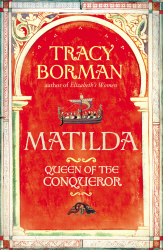 Matilda: Queen of the Conqueror
Matilda: Queen of the Conqueror
Tracy Borman
Jonathan Cape, 320 pp., £20
Hardback
Historian Tracy Borman delivers a brilliant account of the years either side of 1066, as seen through a new and largely unfamiliar lens: namely that of Matilda, the wife and queen of William of Normandy. Although relatively little is known about her life, Borman weaves the few facts that we do have into an engaging narrative of the Conquest, along the way providing insights into eleventh-century aristocratic and royal life, and the complex political webs that the ruling elite spun across north-western Europe. A highly readable and fascinating introduction to the subject of the Conquest.
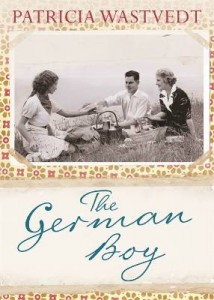 The German Boy
The German Boy
Patricia Wastvedt
Viking, 368 pp., £12.99
Paperback (large format)
Following on from the success of her debut The River, Patricia Wastvedt’s accomplished and compelling second novel takes place primarily in the interwar years of the early twentieth century, focussing on the complex relationships between two families as they come to terms with the momentous political events of the age. The prose is beautifully crafted, filled with lyrical descriptions, a keen sensitivity towards the characters and their sometimes difficult choices, and a sense of poignancy at roads untravelled. A delight to read: moving, thought-provoking and highly recommended.
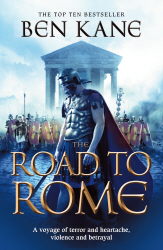 The Road to Rome
The Road to Rome
Ben Kane
Arrow, 608 pp., £6.99
Paperback
Concluding the story that The Forgotten Legion began, Ben Kane takes the reader back to Rome in the final years of Caesar’s dictatorship. The story follows the lives of three characters – two ex-slaves and an Etruscan haruspex or soothsayer – as they find themselves embroiled in the intrigues and conflicts of the time. The settings are vividly drawn and the moral dilemmas well explored as the characters are forced to decide where their loyalties lie. Also keep a look out for Kane’s latest, Spartacus: the Gladiator, which comes out next year.
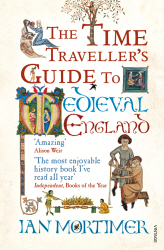 The Time Traveller’s Guide to Medieval England
The Time Traveller’s Guide to Medieval England
Ian Mortimer
Vintage, 368 pp., £8.99
Paperback
From the pen of historian Ian Mortimer comes an in-depth and accessible study of fourteenth-century life, ideal as an introduction to the period, and also (I imagine) a terrific resource for any historical novelists of the later Middle Ages. Assuming the perspective of a recently arrived visitor from our own time, Mortimer explores the workings of medieval English society, with chapters on everything from the landscape to food and drink, from health and disease to the law. Mortimer is also known for his Elizabethan mysteries under the pen-name James Forrester, and indeed a sequel of kinds to this book, The Time Traveller’s Guide to Elizabethan England, is due next year.
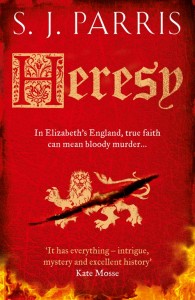 Heresy
Heresy
S J Parris
Harper, 512 pp., £7.99
Paperback
Speaking of Elizabethan mysteries, this debut offering from S J Parris deserves a mention. Narrated by Giordano Bruno, renegade monk, philosopher and spy, the tale unfolds in 1580s Oxford against a backdrop of murder, intrigue and religious strife. Fast-paced and with a keen sense of the issues of the age, it also happens to be the first in a series. The sequel, Prophecy, is already out in paperback and the third volume, Sacrilege, is set to be released in spring 2012.
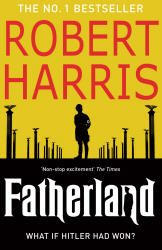 Fatherland
Fatherland
Robert Harris
Arrow, 400 pp., £7.99
Paperback
While not strictly a historical novel per se – Harris’ acclaimed thriller takes place in an alternate 1964, where Hitler won the Second World War – Fatherland is one of the most thrilling reads I’ve come across this year. What at first appears to be a straightforward murder investigation leads Kriminalpolizei detective Xavier March to uncover a conspiracy that runs to the very heart of the Nazi regime. Soon March finds himself in a race against time to expose the truth before the Gestapo catch up with him. If it sounds simple enough, think again. This is brilliantly constructed and thought-provoking stuff, crammed with twists and turns and with a denouement to remember.

